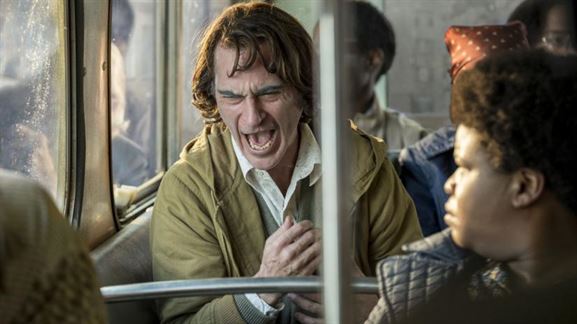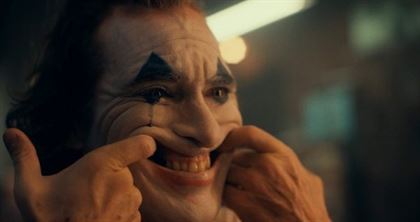When I first heard the news that Warner Bros. was planning on making a Joker origin story, I was definitely opposed to the idea. I prefer this character to have an ambiguous past; Joker is scarier the less we know about him. However, when I heard that Joaquin Phoenix was tapped to play The Clown Prince of Crime, I was immediately on board.
After taking home the top prize at the Venice Film Festival, where it was greeted with an eight-minute standing ovation, Todd Phillips’ highly anticipated “Joker” finally hit theaters with both triumph and controversy.
“Joker” tells the story of Arthur Fleck, the man who would transform to become the Caped Crusader’s iconic arch nemesis. Arthur lives in a small apartment with his mother in the rundown and violent Gotham City, where corruption and mutated rats fill the streets. The film explores Arthur’s tragic descent into madness.
Arthur works as a clown-for-hire, masking his grief-stricken face with makeup as he attempts to fulfill a purpose his mother bestowed on him- “to bring laughter and joy to the world.” The main problem with this is that nobody thinks Arthur is funny. His own coworkers, most of whom are clowns, are scared of Arthur and call him a freak.
In a scene where he watches someone’s standup comedy act, he carefully takes note of what is supposed to be funny. Arthur mistakenly laughs at the wrong times, confidently cackling when the audience is silent.

Arthur Fleck (Joaquin Phoenix) suffers from a condition where he laughs uncontrollably, usually during inappropriate times.
Photo courtesy of Warner Bros.
Near the beginning of the film, we find Arthur meeting with his therapist/social worker. Arthur laughs hysterically for a near full minute, choking as he runs out of breath. Ultimately, Arthur suffers from a condition where he laughs uncontrollably, usually during the most inappropriate of times.
This characteristic of the Joker is brand new, never seen before in previous comic book iterations. Watching Arthur laugh when he obviously was not happy was painful to witness. The audience genuinely felt bad for this man, and there was a sense of helplessness and frustration in the theater, echoing what Arthur was feeling.
This sympathy towards Arthur would most likely not have been possible if it wasn’t for Phoenix’s phenomenal acting. Being front and center for almost every shot of the film, Phoenix had an immense amount of pressure to carry the film, and he did just that.

Joaquin Phoenix gives a terrifying performance in Todd Phillips’ “Joker.”
Photo courtesy of Warner Bros.
In the first few seconds of the film, we see Arthur staring in the mirror, physically forcing himself to smile with his fingers. Phoenix is able to display a range of emotions without speaking a single word. The lead actor also lost 52-pounds for the role, and is shown contorting his body in strange and uncomfortable positions many times in the film.

Arthur Fleck (Joaquin Phoenix) dances in front of a mirror as Hildur Guðnadottir’s chilling score plays.
Photo courtesy of Warner Bros.
This film also looks incredibly gorgeous. Cinematographer Lawrence Sher crafted each shot with great care and precision, depicting Arthur’s world as both brooding and beautiful. The use of colors, the plot and even the film’s title card were reminiscent of films of the 70s. Specifically Martin Scorsese’s “Taxi Driver” and “The King of Comedy.”
Hildur Guðnadóttir’s somber and cello filled score haunted the film, creating anxiety in tense moments, and tranquility in the quietest of scenes. The music was also reminiscent of Hans Zimmer’s “The Dark Knight” score, both of which do an amazing job building suspense and fear.
If there is one gripe I have with “Joker,” it’s Phillips’ inability to be subtle. The film presented certain themes and messages to the audience through exposition and dialogue, rather than believing that viewers are smart enough to interpret the film themselves. It’s clear that Phillips wanted the film to bring issues of mental health, sensationalism in media and corruption to light, but his execution felt rather forced.
“Joker” cannot be defined as a good or bad movie. After watching the film, I was honestly conflicted. I cannot say I enjoyed “Joker,” because the film itself did not bring me any joy. “Joker” is dark, violent and disturbing. When you combine these factors with the film’s beauty, you are left with a stunning piece of art that captivates and shocks those who watch it.



